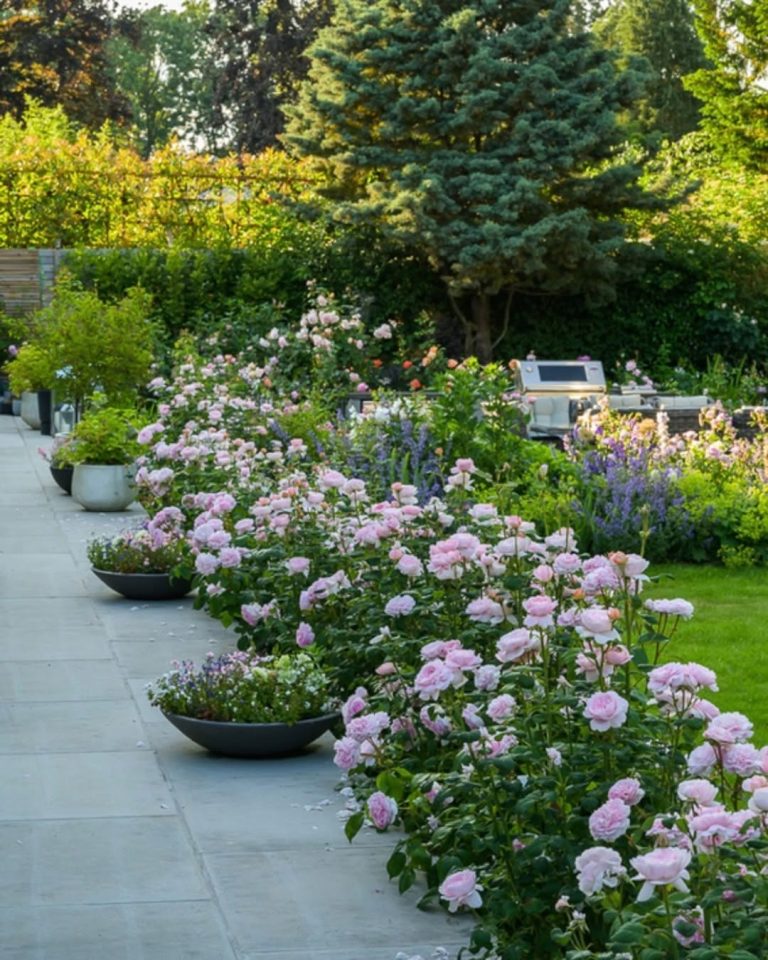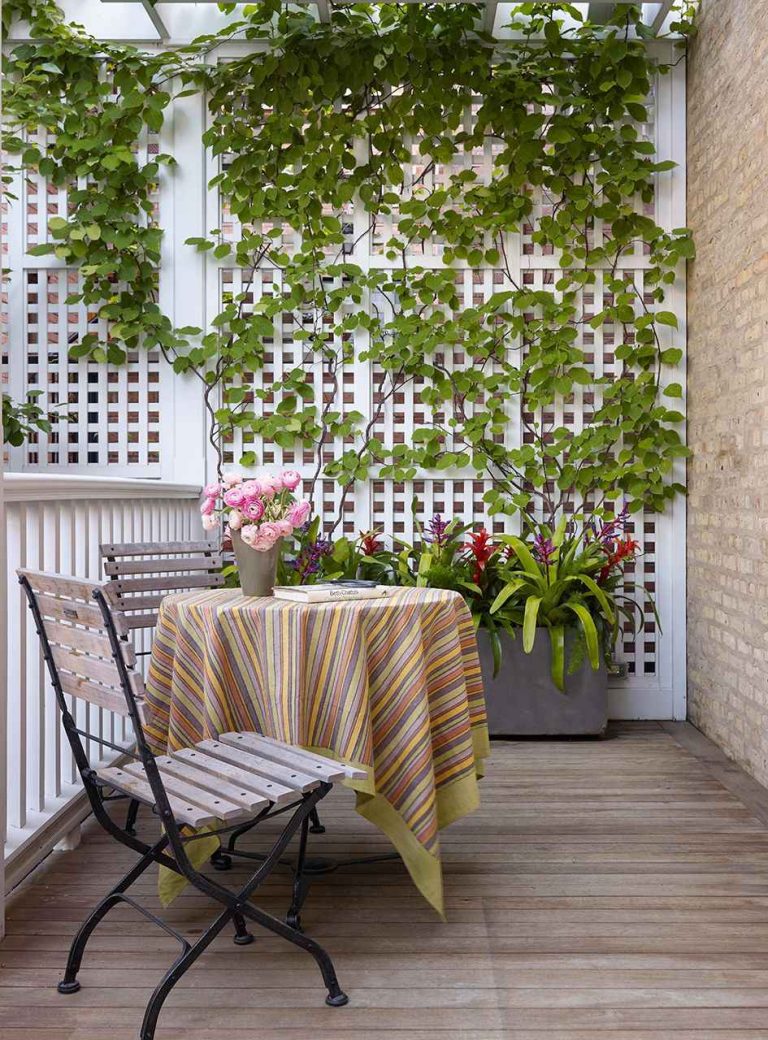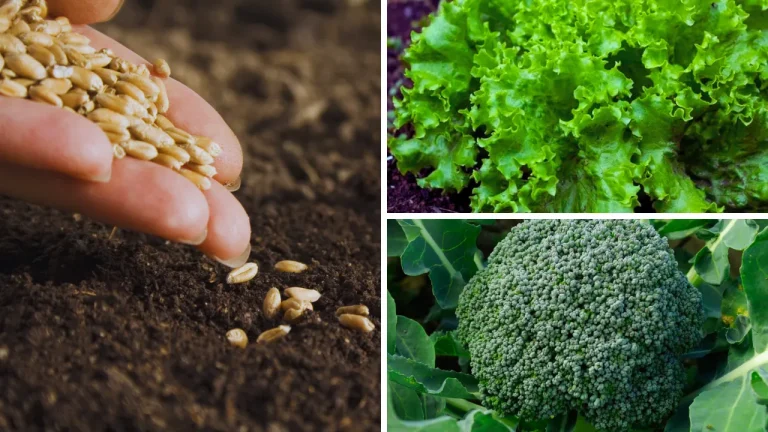21 Rain Gutter Drainage Ideas: Practical Solutions for Every Home
Proper rain gutter drainage is crucial for maintaining the structural integrity of your home and garden. Without a functional drainage system, water can accumulate around your foundation, leading to potential damage and flooding. In this post, we’ll explore 21 rain gutter drainage ideas that will help prevent these issues while also enhancing your outdoor space. These solutions are not only practical but also provide opportunities to get creative with your outdoor living design. Let’s dive in!
1. French Drain System: Efficient Water Redirection
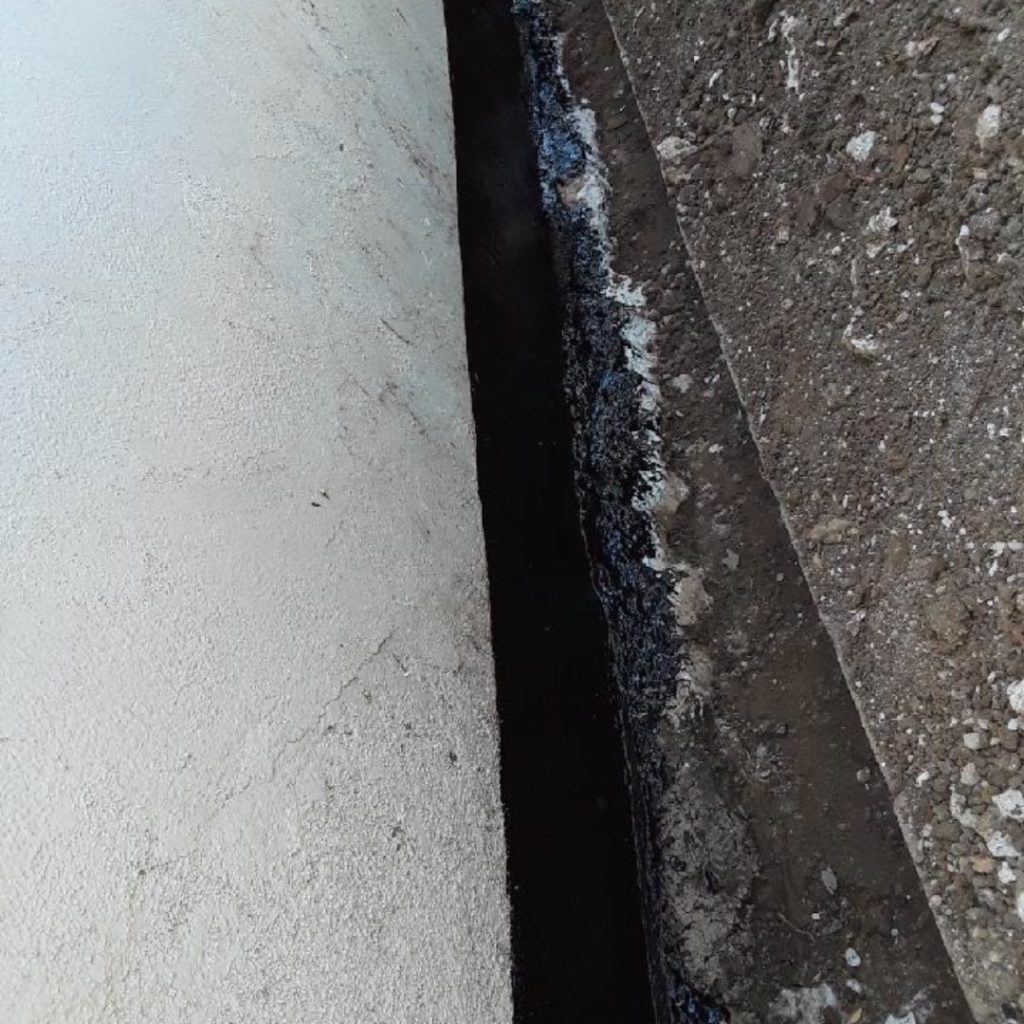
A French drain system is a time-tested method to manage excess rainwater around your home. It consists of a trench filled with gravel and a perforated pipe that redirects water away from your foundation. This system works by collecting water from your gutters or downspouts and channeling it into a designated area such as a garden bed, a dry creek bed, or even a stormwater drain.
Installing a French drain can prevent water from pooling around your home, reducing the risk of erosion and foundation damage. It’s an effective solution for areas with heavy rainfall or poor soil drainage. To create a French drain, you’ll need to dig a trench, line it with a landscaping fabric, and fill it with gravel. The perforated pipe, which sits inside the gravel, helps the water flow easily through the system, away from your foundation.
French drains can be easily integrated into your landscaping, making them both functional and aesthetically pleasing. Whether you’re dealing with a sloping yard or a flat area, a French drain can be customized to suit the unique layout of your property.
2. Downspout Extensions: Simple and Effective

Downspout extensions are one of the easiest and most cost-effective ways to enhance your gutter drainage system. These extensions come in various shapes and sizes, and they work by diverting water further away from your home’s foundation. Whether you’re using a simple elbow extension or a flexible hose, downspout extensions allow you to direct rainwater to a desired location, such as a garden or a rain garden.
The beauty of downspout extensions lies in their simplicity. They’re easy to install, require minimal maintenance, and can be customized to blend into your landscaping. You can find them in various materials, including plastic, aluminum, and vinyl, so they’ll match the aesthetic of your home. Many homeowners choose to install these extensions to avoid water pooling near their foundation, which could otherwise cause serious damage over time.
When installing a downspout extension, ensure it’s directed at an angle so that the water flows away from your home. You may also want to add a splash block or gravel bed at the end to prevent erosion.
3. Rain Garden: Beautifying Your Drainage Solution
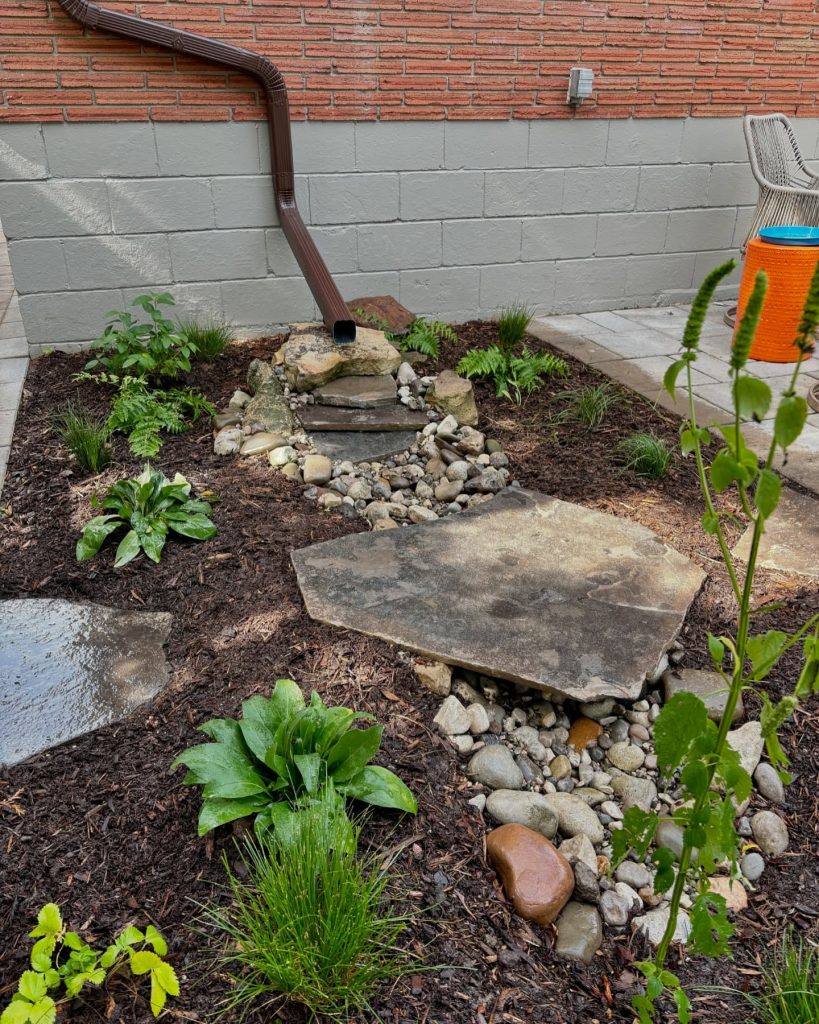
A rain garden is an eco-friendly drainage solution that allows you to manage stormwater while enhancing your landscape. Essentially, it’s a garden that’s strategically placed in a low-lying area to capture excess rainwater. By incorporating native plants that thrive in wet conditions, rain gardens help absorb water and prevent runoff from overwhelming your gutters.
To create a rain garden, start by selecting a spot in your yard that naturally collects water. Choose plants that are well-suited to this environment, such as ferns, rushes, and wildflowers. These plants have deep root systems that help water infiltrate the soil, reducing surface runoff. Rain gardens not only help with drainage but also improve the overall appearance of your yard, attracting pollinators like butterflies and bees.
A well-designed rain garden is a beautiful and functional solution for managing stormwater runoff while adding visual interest to your outdoor space. With proper planning, it can be a long-lasting and low-maintenance option for homeowners seeking sustainable drainage.
4. Gutter Guards: Keeping Debris Out of Your Drainage System
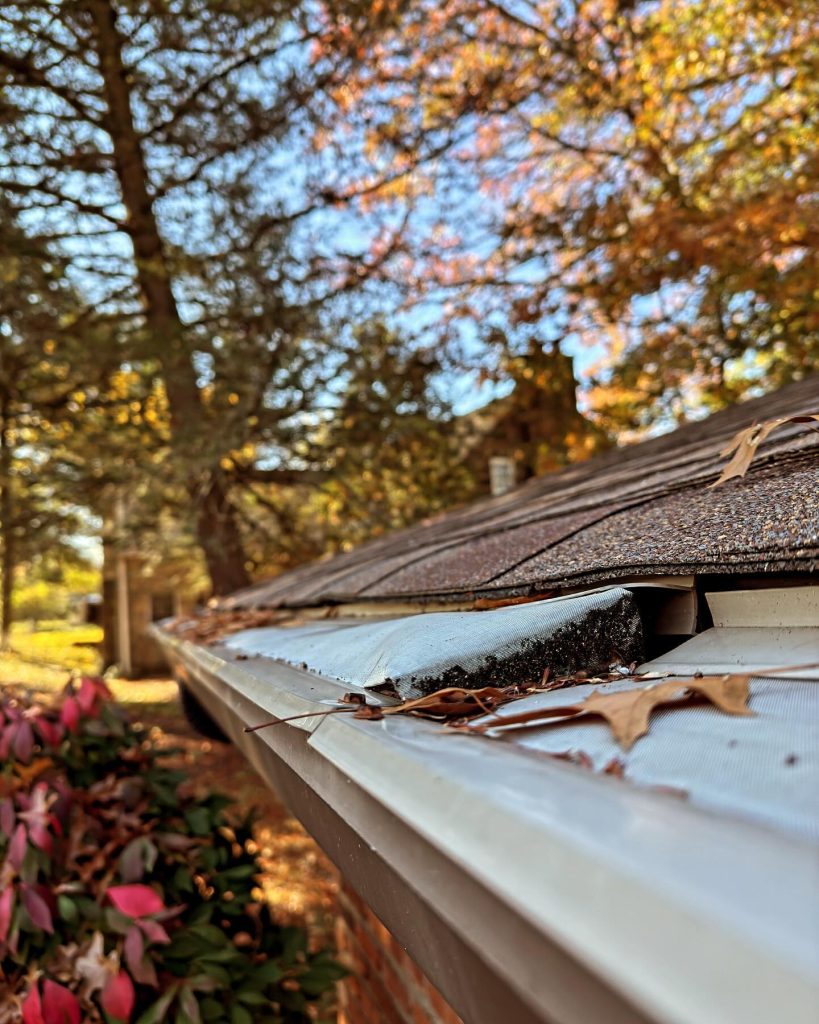
Gutter guards are designed to keep debris like leaves, twigs, and pine needles out of your gutters, ensuring that rainwater can flow freely through your system. There are several types of gutter guards available, including mesh screens, solid covers, and foam inserts. Each type offers its own advantages, so you’ll need to choose one that best suits your home’s needs.
By preventing clogs, gutter guards can reduce the amount of maintenance required for your gutters and drainage system. They also improve the overall efficiency of your drainage system by allowing water to flow without obstruction. For homes with large trees nearby or in areas with heavy rainfall, gutter guards can be especially helpful in keeping gutters clear and reducing the risk of water overflow.
Installing gutter guards is a relatively easy DIY project, and they can be fitted to most gutter types. While they may require some maintenance (like occasional cleaning), gutter guards are an excellent investment for long-term drainage management.
5. Soakaway Pits: Natural Drainage Solutions
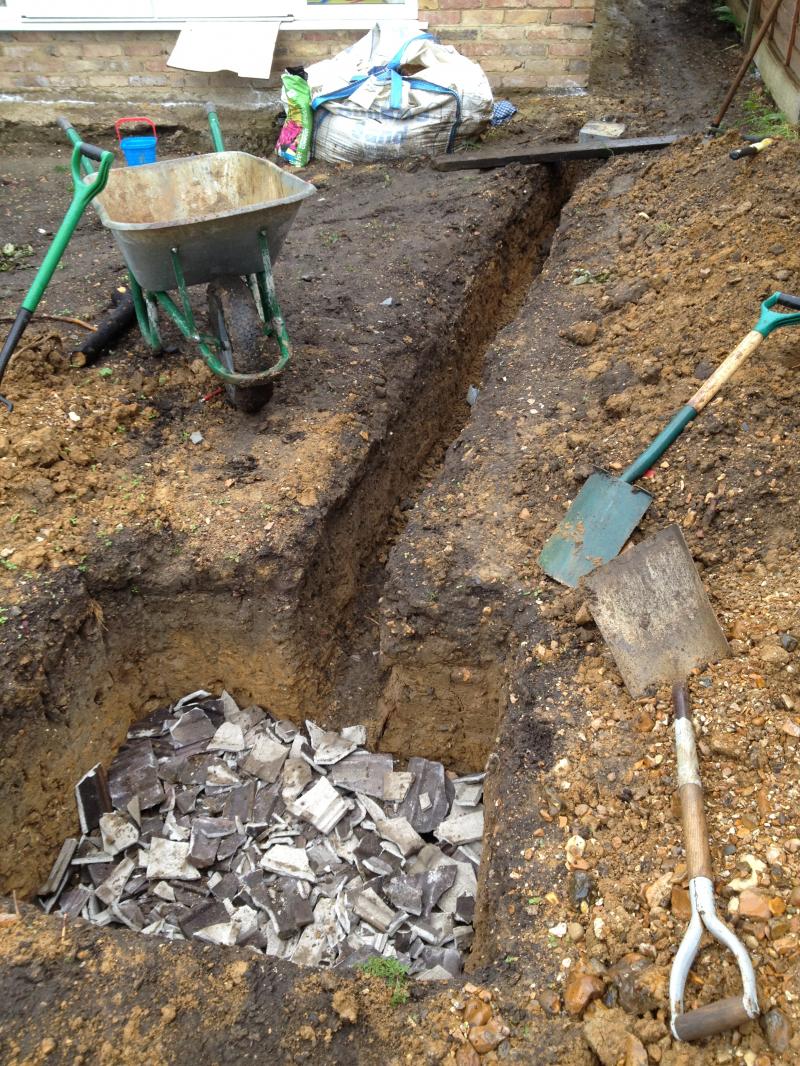
A soakaway pit is a simple and effective way to manage rainwater runoff by allowing water to infiltrate into the ground. It’s essentially a large hole filled with gravel or crushed stone, which absorbs the water from your downspouts. Soakaway pits are best suited for areas with well-draining soil that allows water to flow through easily.
Installing a soakaway pit requires digging a hole large enough to hold a significant amount of water. The pit should be lined with landscaping fabric to prevent the gravel from mixing with the soil. Once the gravel is in place, you can connect your downspout to the pit, allowing rainwater to flow directly into the system.
This solution is perfect for homeowners who want a low-maintenance and eco-friendly way to manage stormwater. Soakaway pits are also less visible than other drainage solutions, making them a good option for those who want a discreet solution that blends into their yard.
6. Dry Creek Bed: A Scenic Way to Handle Runoff

A dry creek bed is an aesthetically pleasing way to handle excess rainwater. It’s a shallow, rock-lined trench that mimics the natural flow of a creek, guiding water away from your home while adding visual interest to your yard. Dry creek beds are perfect for homes with sloped landscapes, where water tends to run off in one direction.
To create a dry creek bed, start by digging a shallow trench in the desired location. Line the trench with landscaping fabric to prevent weeds from growing, and then fill it with rocks, gravel, or stones. The rocks should vary in size to create a natural look, with larger stones at the base and smaller stones at the top.
Dry creek beds can be designed to fit the shape of your landscape, making them a versatile option for many different types of yards. They not only solve drainage issues but also enhance the overall beauty of your outdoor space.
7. Splash Blocks: Protecting Your Foundation

Splash blocks are simple, effective, and inexpensive drainage solutions that help direct water away from your foundation. These small concrete or plastic blocks are placed at the base of your downspouts to catch the water and direct it away from your home. Splash blocks prevent water from eroding the soil near your foundation and reduce the risk of water damage to your home.
When choosing splash blocks, look for ones that are long enough to divert water several feet away from the base of your house. You can also use them in combination with downspout extensions to further direct water to a designated area, such as a garden bed or a dry creek bed.
Splash blocks are available in various shapes and materials, including decorative options that can complement your landscaping. They’re easy to install and maintain, making them a great choice for homeowners looking for a quick and affordable drainage solution.
8. Rainwater Harvesting Systems: Reusing Water for the Garden

Rainwater harvesting systems allow you to collect and store rainwater for later use in your garden or yard. This eco-friendly solution helps conserve water and reduce your water bill by utilizing the natural rainfall that would otherwise be wasted. The system typically consists of a rain barrel or a large storage tank connected to your downspout, where the collected water is filtered and stored for future use.
To install a rainwater harvesting system, start by placing a rain barrel or storage tank at the base of your downspout. You can find rain barrels in a variety of sizes, from small 50-gallon barrels to larger 200-gallon tanks. A simple mesh filter can be added to the top of the barrel to prevent debris from entering the water.
Rainwater harvesting systems are perfect for homeowners who want to make the most of natural resources while helping their garden thrive. They can also be integrated into existing drainage systems to collect excess water during heavy rainfall.
9. Rain Chains: A Decorative and Functional Option

Rain chains are a unique and visually appealing alternative to traditional downspouts. They replace downspouts by guiding rainwater down in a decorative chain or series of cups. As the water flows down, it creates a beautiful cascading effect, adding both style and function to your drainage system.
Rain chains come in a variety of materials, including copper, aluminum, and stainless steel, and are available in many different styles and designs. Whether you’re looking for a sleek modern look or a more traditional design, there’s a rain chain to suit your taste. Rain chains can also be paired with a decorative basin or a small rain garden at the bottom to enhance their visual appeal.
Aside from their beauty, rain chains are highly effective in guiding water away from your home. They’re easy to install and require minimal maintenance, making them a practical and attractive drainage solution for homeowners who want to add a touch of elegance to their outdoor space.
10. Biorentention Cells: Eco-Friendly Water Management

Bioretention cells are an eco-friendly drainage solution that involves the use of plants and soil to absorb and filter rainwater. These cells are typically placed in low-lying areas of your yard, where they collect stormwater runoff and allow it to filter through layers of gravel, soil, and plants.
The key to a successful bioretention cell is choosing the right plants. Native plants that thrive in wet conditions are ideal, as they help absorb water while providing habitat for pollinators and other wildlife. The soil layers in the bioretention cell also play a role in filtering pollutants, such as oil and fertilizer, before the water is absorbed into the ground.
Bioretention cells are a great option for homeowners who want to manage stormwater in an environmentally responsible way. They can be integrated into your landscape design to add beauty and functionality while helping to prevent water from running off and causing damage to your home.
11. Channel Drains: Efficient for Driveways and Patios

Channel drains, also known as trench drains, are designed to capture and direct water away from flat surfaces like driveways, patios, and walkways. These drains are typically installed along the edges of hardscaped areas and are made of concrete, plastic, or metal.
Channel drains consist of a long, narrow trench covered by a grate, through which water flows. They’re especially useful for managing rainwater runoff on driveways or patios where water can accumulate and cause puddles or erosion. Once the water enters the channel drain, it’s directed through an underground pipe or drainage system.
Channel drains can be a stylish addition to your outdoor space, with many different grate designs to choose from. They’re effective at preventing flooding and water damage, especially in areas with heavy rainfall or poor drainage.
12. Catch Basins: Efficient Water Collection
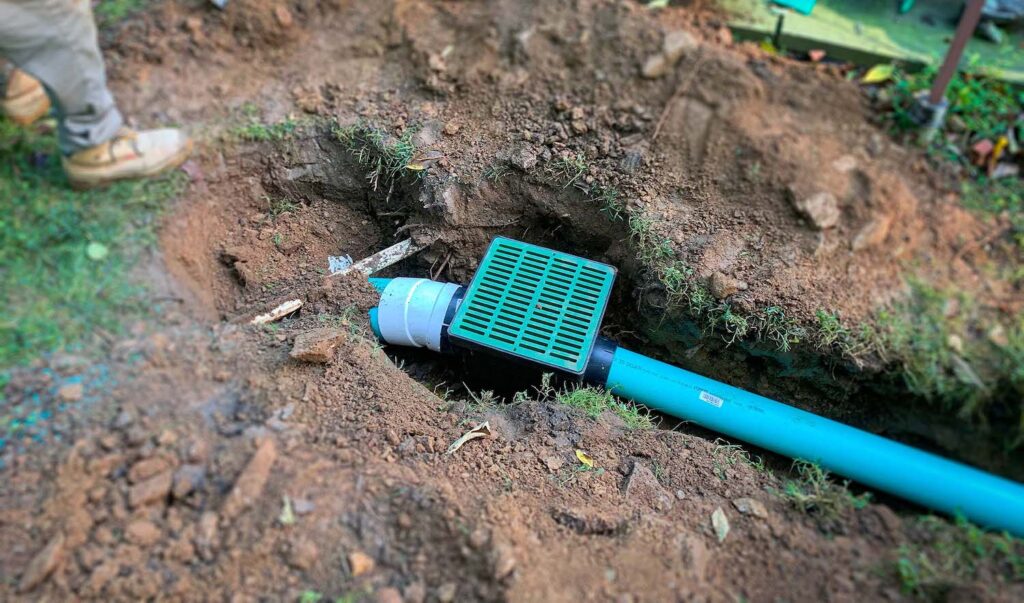
Catch basins are underground drainage systems designed to collect and channel rainwater away from your foundation. They typically consist of a grated inlet that captures water and channels it into an underground drainage pipe. Catch basins are often used in combination with other drainage systems, such as French drains or channel drains, to manage large amounts of water effectively.
One of the main advantages of catch basins is their ability to prevent water from pooling on the surface. As water enters the basin, it’s directed into a subterranean drainage system, where it can flow freely away from your home. Catch basins are especially useful in areas with heavy rainfall or poor surface drainage, as they can handle large volumes of water without clogging.
Catch basins come in various sizes, allowing you to choose one that suits your drainage needs. They’re typically made of durable materials like concrete or plastic, ensuring long-lasting performance.
13. Permeable Pavers: Sustainable and Stylish

Permeable pavers are an environmentally friendly option for managing rainwater runoff, often used in driveways, patios, and walkways. These pavers are designed with small gaps that allow water to flow through and be absorbed by the underlying soil. Instead of water running off the surface, it percolates through the gaps and is naturally filtered by the ground beneath.
Installing permeable pavers creates a sustainable solution for managing stormwater while also enhancing the aesthetic appeal of your yard. Whether used for a driveway, walkway, or patio, these pavers allow water to drain through efficiently, reducing the risk of pooling and erosion. Additionally, permeable pavers are available in various styles, so you can choose the perfect look for your outdoor space.
Permeable pavers are an excellent option for homeowners who want to reduce their environmental impact while improving their property’s drainage. They also meet local stormwater management requirements, which is beneficial in areas where water runoff is strictly regulated.
14. Swales: Shallow Ditches for Drainage Control

Swales are shallow, gently sloped ditches that direct water away from your home and toward a designated drainage area. Typically lined with grass or plants, swales can be used to control stormwater runoff, prevent erosion, and improve water absorption. By creating a natural flow path, swales help keep rainwater from pooling around your foundation.
Swales can be customized to fit the landscape of your yard, and they can be used in conjunction with other drainage methods like French drains or downspout extensions. When designing a swale, it’s important to choose a location with a natural slope so that water can flow easily. Adding plants and grass helps absorb excess water, promoting healthier soil and reducing the risk of flooding.
Swales are ideal for large yards or properties with sloped terrain, where water runoff is a concern. They’re a simple, cost-effective way to manage drainage while adding a natural element to your landscape.
15. Cisterns: Storing Water for Future Use
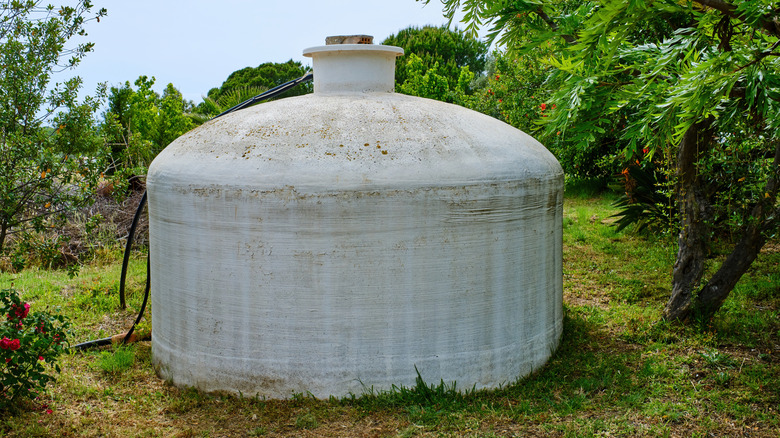
A cistern is a large storage tank designed to collect and store rainwater for later use. While similar to rainwater harvesting systems, cisterns are often larger and used for more significant water collection needs, such as irrigation or landscape watering. By redirecting rainwater into a cistern, you can create a sustainable water source that reduces your dependence on municipal water supplies.
Cisterns come in various sizes, ranging from small barrels to large tanks capable of holding thousands of gallons of water. Installing a cistern is typically straightforward, and many models are designed to be placed above or below ground. A filtration system is often included to ensure that the stored water is clean and safe for use.
Using a cistern not only helps conserve water but also provides a reliable backup water source for droughts or other emergencies. It’s an ideal solution for homeowners with large gardens or those who want to make their homes more eco-friendly by reusing rainwater.
16. Trench Drains: Ideal for Large Paved Areas

Trench drains, similar to channel drains, are designed for large paved areas such as driveways, parking lots, or patios. These drains are installed along the edge of the paved area, and water is funneled into the drain through a narrow trench covered by a grate. Trench drains are typically made from durable materials like concrete or metal, making them perfect for handling high volumes of water.
Trench drains are particularly effective for areas where surface water tends to collect, such as at the base of a driveway or around patios. These drains can be integrated into your outdoor design in a way that’s both functional and aesthetically pleasing. For example, a trench drain can be installed with a decorative grate to match your outdoor style, blending seamlessly into your landscape.
While trench drains are typically more complex to install than other drainage solutions, they are highly effective at managing runoff in large areas and preventing pooling or flooding.
17. Gravel Beds: A Natural Way to Absorb Rainwater

Gravel beds are a simple yet effective way to manage stormwater runoff. By placing a thick layer of gravel in a designated area, you can absorb excess rainwater and allow it to slowly percolate into the ground. Gravel beds work especially well in combination with other drainage solutions, such as downspout extensions or French drains, to create a comprehensive water management system.
The beauty of gravel beds lies in their simplicity. Once the gravel is laid down, water flows through it and is absorbed by the soil beneath, reducing surface runoff. This can help prevent soil erosion and reduce the risk of flooding in your yard. Gravel beds can also be planted with drought-tolerant plants or grasses that help further absorb water.
Gravel beds are a low-maintenance option for homeowners who want an efficient and natural solution for managing rainwater. They’re perfect for areas with well-draining soil and can be incorporated into your landscape design as a functional feature.
18. Infiltration Trenches: Directing Water Below Ground
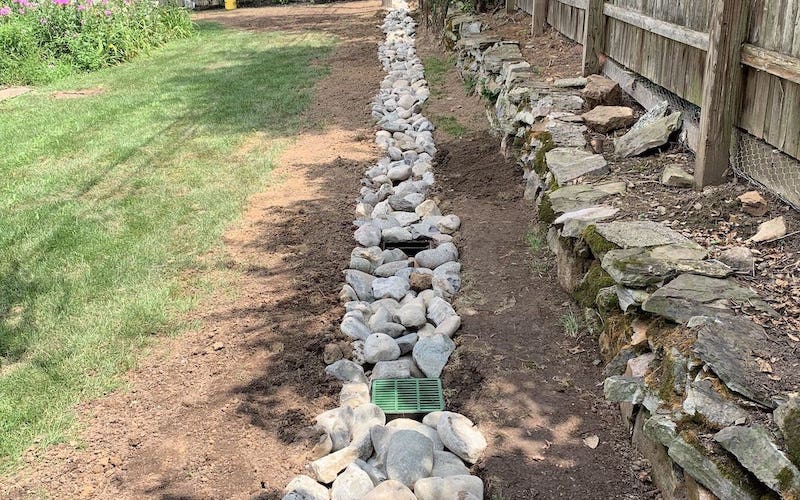
Infiltration trenches are similar to French drains but designed to store water in a trench filled with gravel or crushed stone, allowing it to infiltrate into the ground. These trenches are typically placed in areas with heavy runoff, where water needs to be directed below the surface to prevent flooding or erosion.
To install an infiltration trench, dig a shallow trench and fill it with a mixture of gravel and large stones. A perforated pipe can be placed in the center of the trench to help water flow through the system. Infiltration trenches are often used to manage large amounts of rainwater from paved areas, lawns, or roof runoff.
These trenches are effective in regions with well-draining soil, where water can easily percolate into the ground. They’re an excellent solution for homeowners looking to manage runoff without relying on traditional stormwater systems.
19. Gutter Downspout Splash Guards: Reducing Splash Damage

Splash guards, or splash blocks, are small devices installed at the end of your downspouts to prevent water from splashing onto your foundation. Made from materials like plastic, concrete, or rubber, splash guards direct water away from your foundation, reducing the risk of soil erosion and water damage.
Splash guards are essential for homes with downspouts that empty directly onto hard surfaces such as sidewalks or patios. By using a splash guard, you can ensure that water doesn’t pool near your home and that it’s directed toward a more suitable drainage area. Splash guards are easy to install and come in a variety of sizes and shapes to suit your needs.
These simple devices are effective in protecting your foundation from water damage and helping water flow away from your home’s exterior.
20. Rainwater Diverters: Collecting Water for Garden Use

Rainwater diverters are attachments that redirect rainwater from your gutters into a rain barrel or storage tank. These devices can be easily installed on your downspouts, allowing you to collect and reuse rainwater for your garden or other outdoor purposes. Rainwater diverters are a great way to conserve water, reduce your utility bill, and make your landscaping more sustainable.
The installation of a rainwater diverter is straightforward and doesn’t require any major modifications to your existing downspouts. Once installed, the diverter ensures that water flows into your rain barrel or cistern during a storm, allowing you to store it for later use. This is especially useful in drought-prone areas, where water conservation is crucial.
Using rainwater diverters in combination with a rain barrel or cistern is a great way to create an eco-friendly water management system that benefits your garden and reduces runoff.
21. Green Roofs: Natural Water Absorption
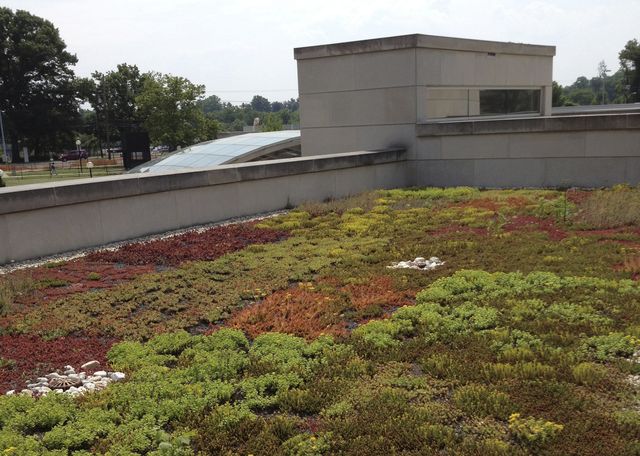
Green roofs are an innovative way to manage rainwater while enhancing your home’s insulation and energy efficiency. These roofs are covered with vegetation, which absorbs and filters rainwater before it reaches the ground. The plants on a green roof help to slow down the water flow, preventing excessive runoff and reducing the risk of flooding.
In addition to managing rainwater, green roofs provide numerous other benefits, including improved air quality, reduced energy consumption, and an attractive visual appeal. They can be installed on both residential and commercial buildings, making them a versatile solution for homeowners looking to go green.
Green roofs require careful planning and installation, but they are an excellent way to integrate water management into your home’s overall design while promoting sustainability.
Conclusion: Achieving Efficient Rain Gutter Drainage
Source
Effective rain gutter drainage is crucial for protecting your home from water damage and ensuring the long-term stability of your property. With these 21 ideas, you can create a tailored drainage system that meets your needs, improves the aesthetic appeal of your outdoor space, and reduces the risk of foundation problems. Whether you opt for simple solutions like downspout extensions or more complex systems like French drains or green roofs, there are plenty of ways to enhance your home’s water management system.
By selecting the right drainage solution for your yard’s layout, you can ensure that rainwater is properly redirected, helping to maintain the beauty and functionality of your home’s exterior. Make sure to consider both practicality and aesthetics when choosing your system, and don’t hesitate to combine multiple methods to achieve optimal results.
Remember, investing in proper drainage today can save you time, money, and headaches in the future, so take the time to explore these ideas and find the perfect drainage system for your home.

